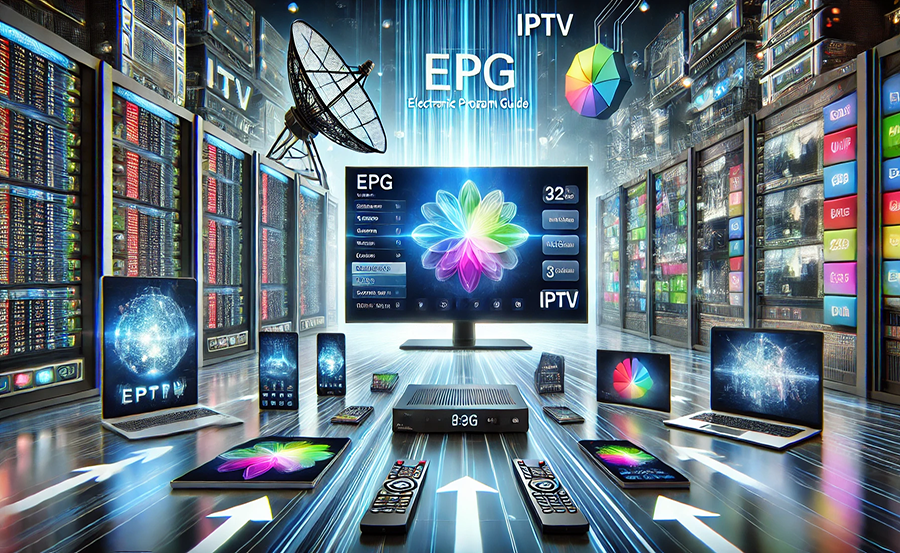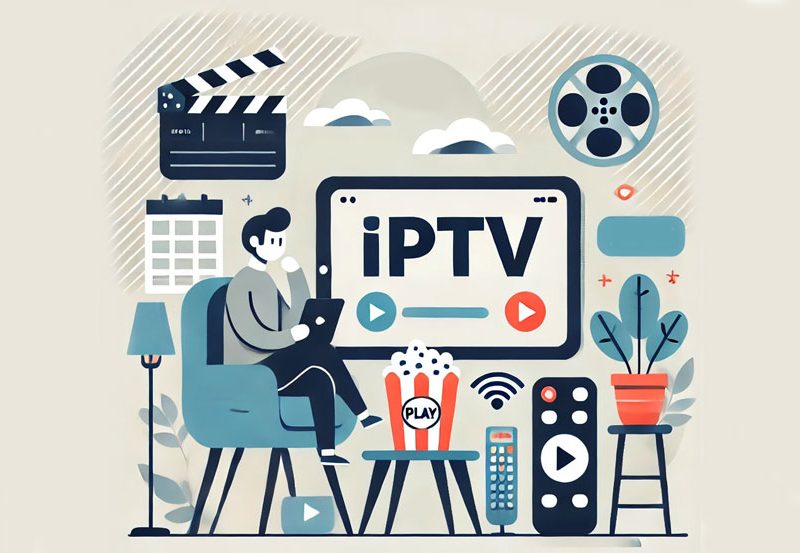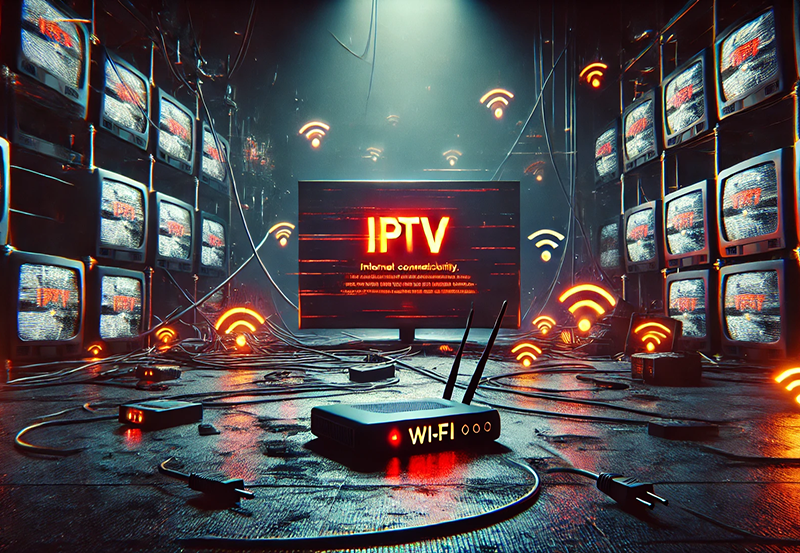When you think about how we consume television content today, it’s all about choice and customization. Gone are the days when one had to follow a strict broadcast schedule. Nowadays, Electronic Program Guides (EPGs) have revolutionized how we interact with our TVs, thanks to technologies like XML. If you’re curious about how XML plays a part in enhancing EPG systems and what it means for the future of Global IPTV services, keep reading. We’ll dive into the technicalities in a way that feels more like a chat over coffee, rather than a dry lecture.
Buy 1 Year IPTV Subscription and Enjoy Unlimited Content
Understanding XML: The Basics
Lets getting familiar with XML, it stands for Extensible Markup Language. XML is a flexible, text-based format that is employed extensively in information storage, sharing across devices, and software interchange. What makes XML so great? It’s not just the alphabet soup of acronyms—it’s about structuring data in a way that is both human-readable and machine-readable.
At its core, XML is about organizing data. While it seems like just another markup language like HTML, its capacity for scaling and adaptation makes it particularly essential in complex systems such as EPGs. So, whether you’re an IPTV for Android enthusiast or just dabbling in tech, XML might be more relevant to your everyday life than you think.
Role of XML in EPG Systems
Enhancing Data Interoperability
One of the standout features of XML is its ability to allow data to move seamlessly between applications. In the realm of EPG systems, XML acts as a lingua franca, ensuring that data can traverse different platforms and devices without glitches. Imagine the chaos that could ensue if every device and software had its own language—XML prevents that, keeping things running smoothly.
With XML, data about show timings, ratings, and brief synopses can be packed into neat XML files and distributed across various platforms. This ensures that the data remains accurate and updated, which in turn enhances the user experience for those using Global IPTV services.
Structuring Complex Data
EPG systems rely on complex data structures to provide information about TV schedules, video-on-demand offerings, and interactive services. XML excels here due to its hierarchical nature and ability to nest elements within each other. This allows for the accurate representation of complex elements that are part of IPTV systems.
Moreover, within the XML framework, data types can be easily defined. From simple types like strings and integers to complex custom data types, XML offers a myriad of options for developers, ensuring the EPG systems are robust and adaptable to varying content needs.
XML in Action: Real World Applications
IPTV for Android
If you’re keen on watching IPTV content on your Android device, XML is quietly working behind the scenes to make it all possible. By structuring EPG data in a consistent format, XML ensures Android IPTV apps remain synced with the latest program data.
This synchronization means less headache for developers and more enjoyment for users, who can easily access an updated and organized list of available channels and shows. Revolutionize Your IPTV Adventure by appreciating the tech that makes such seamless user experiences possible.
Global IPTV Services
Global IPTV services rely on the accurate and timely update of data, a capability that XML provides. With a standardized XML feed, IPTV providers can push out real-time updates regarding channel changes, new content introductions, and special events to users worldwide.
This kind of reliability is particularly pivotal when dealing with international audiences. XML ensures that updates can be translated, adjusted, and fit into diverse electronic program structures, maintaining an uninterrupted and harmonious service delivery across the globe.
Challenges and Future of XML in EPGs
Data Complexity and Load
Even as XML simplifies data sharing, it isn’t without its challenges. The sheer volume of data processed by modern EPG systems poses a challenge, especially regarding loading and processing speeds. XML files can become quite large and cumbersome, affecting performance if not efficiently managed.
Efficient parsing of XML is crucial. Solutions like Streaming APIs for XML (StAX) and other optimizing techniques are being employed to counter these challenges, yet the need for more compact and efficient data structures continues to be an area for ongoing research.
Integration with Emerging Technologies
As technologies evolve, there is a constant drive to integrate newer data formats and systems. JSON, for example, offers a similar capability to XML but in a more concise format, making it popular in web applications. The debate between XML and JSON is ongoing, affecting decisions around EPG system architectures.
Future integration might see a hybrid approach, where both XML and JSON, among other formats, are used in conjunction to address specific needs in EPG systems. Understanding and adapting to these trends is crucial for businesses looking to Revolutionize Your IPTV Adventure.
Lack of Standardization
Impact on IPTV Services
One significant problem is the lack of universal standards across different IPTV providers, leading to inconsistencies in how XML files are utilized. Without a standard, the interoperability benefits of XML may not be fully realized, causing discrepancies in user experiences.
Efforts are continually being made to address these issues. Industry-wide collaborations and the establishment of clearer standards could help streamline systems, providing more uniform and reliable experiences for end-users across platforms globally.
The Road Ahead
Looking forward, the role of XML in EPG systems is expected to grow, influenced by ongoing innovations and global digital trends. There’s anticipation that newer iterations of XML or entirely different languages might replace existing uses, but for now, XML remains foundational in EPG systems.
For industry stakeholders, staying informed about updates and shifts in technology is imperative. As the saying goes, the only constant is change, and nowhere is that truer than in technology. Leveraging XML efficiently will continue to be key to Revolutionize Your IPTV Adventure and heading off potential disruptions.
Your Questions Answered

What exactly is XML, and why is it crucial for EPG systems?
XML, or Extensible Markup Language, is a way of structuring data in a readable format for both machines and people. It’s crucial for EPG systems because it facilitates seamless data exchange and ensures that information remains consistent across devices.
How does XML improve Global IPTV services?
XML allows Global IPTV services to push timely updates about programming to users, maintaining consistency and reliability. By structuring data efficiently, XML ensures updates are easily interpreted across a range of platforms and devices, enhancing the overall user experience.
Can XML be replaced by technologies like JSON in EPG systems?
While JSON offers concise data representation, XML’s hierarchical nature makes it exceptionally suited for complex, nested datasets typical in EPG systems. A hybrid model using both, where needed, could be the future, ensuring compatibility and efficiency.
What are the challenges facing the use of XML in EPG systems?
Challenges include managing data complexity and ensuring efficient parsing. XML files can be large, impacting system performance. Also, the lack of universal standards in XML file utilization across various IPTV providers can lead to inconsistencies in user experiences.
Is XML still relevant to IPTV for Android users?
Absolutely. XML ensures that the program data remains consistent and updated, providing Android IPTV users with a seamless viewing experience. Despite evolving technologies, XML continues to play a vital role behind IPTV interfaces.
Troubleshooting IPTV Audio Sync Issues: What You Need to Know





